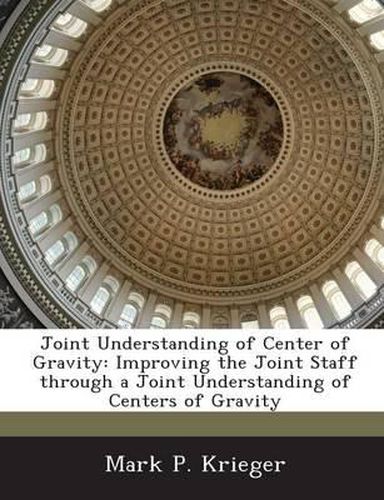Readings Newsletter
Become a Readings Member to make your shopping experience even easier.
Sign in or sign up for free!
You’re not far away from qualifying for FREE standard shipping within Australia
You’ve qualified for FREE standard shipping within Australia
The cart is loading…






The purpose of this research is to define centers of gravity in a way that meets the needs of all branches of service and focuses center of gravity analysis in a way that makes joint staffs more effective. The research concludes that a joint definition that is conceptually acceptable for all branches of service will improve center of gravity analysis and make joint staffs more effective. Defining centers of gravity in a way that is acceptable to all branches of service is a daunting task. Each service is formed based on its specialized operational art. While this difference is necessary to maintain a balanced and strong military force, it makes consensus difficult. This research shows that a suitable definition that incorporates the essence of each service’s operational art form leads to a conceptual understanding of centers of gravity. Part of understanding the concept is recognizing the characteristics of a center of gravity and how the concept is applied in military campaign planning, particularly center of gravity analysis. This research identifies center of gravity characteristics, proposes a definition for consideration by joint doctrine writers, and identifies areas of additional study in order to further develop an understanding of centers of gravity. As the hypothesis suggests, there is a direct relationship between defining centers of gravity and its impact on center of gravity analysis. There are additional factors that relate to centers of gravity that are important to understanding the complete concept. Some areas this research identifies are the evolution of warfare, globalization, systems theory, revolutions in military affairs, and the rise of non-state actors as strategic and political organizations.
$9.00 standard shipping within Australia
FREE standard shipping within Australia for orders over $100.00
Express & International shipping calculated at checkout
The purpose of this research is to define centers of gravity in a way that meets the needs of all branches of service and focuses center of gravity analysis in a way that makes joint staffs more effective. The research concludes that a joint definition that is conceptually acceptable for all branches of service will improve center of gravity analysis and make joint staffs more effective. Defining centers of gravity in a way that is acceptable to all branches of service is a daunting task. Each service is formed based on its specialized operational art. While this difference is necessary to maintain a balanced and strong military force, it makes consensus difficult. This research shows that a suitable definition that incorporates the essence of each service’s operational art form leads to a conceptual understanding of centers of gravity. Part of understanding the concept is recognizing the characteristics of a center of gravity and how the concept is applied in military campaign planning, particularly center of gravity analysis. This research identifies center of gravity characteristics, proposes a definition for consideration by joint doctrine writers, and identifies areas of additional study in order to further develop an understanding of centers of gravity. As the hypothesis suggests, there is a direct relationship between defining centers of gravity and its impact on center of gravity analysis. There are additional factors that relate to centers of gravity that are important to understanding the complete concept. Some areas this research identifies are the evolution of warfare, globalization, systems theory, revolutions in military affairs, and the rise of non-state actors as strategic and political organizations.